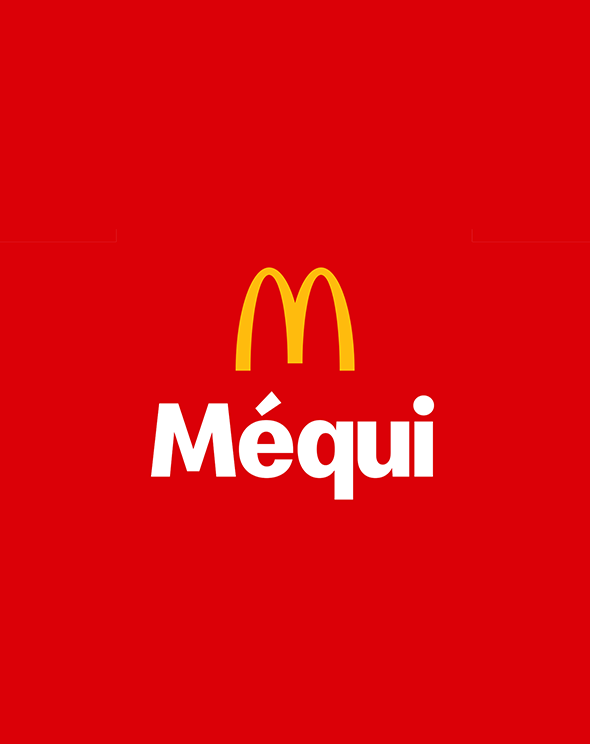This article originally appeared in The Drum.
If you visit McDonald’s in Brazil, you may notice the name on the façade of the building is ‘Méqui’ – the local name for a global brand. It’s not so unusual for global brands to adopt names that suit local language, like Coca-Cola being “Kekoukele” in Chinese. However, this highly functional decision to deploy a local language translation is rather different than the reasonings behind McDonald’s Brazilian ‘Méqui.’
Walk down any main shopping street in the world and you’d be forgiven for forgetting what country you are in. With most major cities now awash with the same multinational brand names, the local feel of many urban thoroughfares has all but disappeared. Still, the sense of familiarity that comes along with the classic Italian restaurant, or well-known Irish pub, does provide customers with enough predictability to make comfortable choices and reduce risk of a disappointing purchase. While predictability offers some clear positives for customers, there are downsides as well.
Localization of the globalized brand
Globalization has long been considered a positive for companies. As brands have sought to grow and reach new customers, expanding into new geographies has been attractive. However, this attractiveness around globalization has arguably not been uniform across the board, with many consumers becoming increasingly sceptical, particularly since the 2008 financial crash. Brands in diverse industries have been accused of paying little to no local taxes and capitalizing on cheap labour costs, poor safety standards in developing countries, and questionable environmental practices despite the climate emergency. This has resulted in growing distrust towards globalized brands, as well as coinciding with the rise of a new wave of nationalism around the world. Trust has been eroded.
With a need to regain that trust, many global companies are now looking to individualize their brands through localization.
Brand ownership
Traditionally, brands have been owned by the marketing team. But as technology has advanced and external audiences have been given a voice, communication and a sense of ownership has become omni-directional. Consumers are part of a shared economy with immense power to generate brand change and affect outcomes.
Branded monikers like ‘hoover’, preferential to the term ‘vacuum cleaner’ in many parts of the world, were early indicators of the power held by consumers. This is something we experience today with the likes of Google and Uber, with both brand names transforming into accepted verbs.
The case of Méqui is still not the same, however. Unlike Hoover or Google, which became verbs due to organic shifts in language use, Méqui is a demonstrable example of a global brand that has instead evolved through collaboration with the local community.
Many marketers now recognize that brand is no longer simply owned by the internal team or company, but a collaboration belonging to all stakeholders.
Brands are adapting and growing their localized personality around the globe: In 2016, nine years after launching its flagship store in London, Uniqlo dedicated three floors of its Oxford Street base to local culture. In 2010, Nike set up local running clubs through its Nike+ Run Club.
Today’s brand experience must be user-centric – not a one-way transaction, but a collaboration to consider in the following three steps.
Listen
Understanding why your customers choose your brand is vital to ensure you remain their choice. Be aware of local cultural nuances. Actively listening can ensure your brand is relevant and inclusive. We do this through our tool Eyeopener™, a research methodology to accurately illuminate and detail true, deep brand preferences.
Know your place
Understand what your brand is to the local community. Is it really integrated with the local culture? Communicate in a relevant way. All brands don’t need to be in all conversations all the time.
Be flexible
Brand has often been seen as a fixed asset. But modern brands operate in an ecosystem. They need to flex and stretch with the world around them. Don’t be afraid to allow your brand to evolve and live (somewhat) on its own. It may not be the direction you had planned, but that doesn’t mean it’s wrong. Local cultures are ecologies. Brands must flex to their shape.
The future
As the world deals with the impacts of recent years, of broad political upheaval, as well as the countless challenges created by the pandemic, customer expectations will likely continue to evolve at an unprecedented speed. Listening, understanding and adapting will be key to ensuring your brand is future-proofed for that evolution. Not just on a global scale, but also within the culture of local communities.
Liz Olsen is Head of Strategy, EMEA


